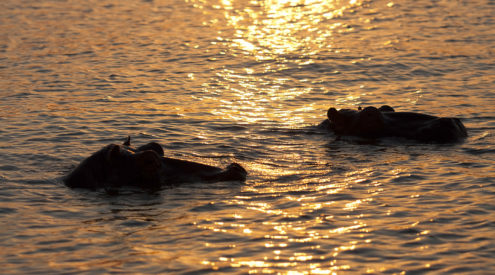Champions of the water, ducks and geese (both are in the Anatidae family) are ideally suited to lives on lakes and marshes, with waterproof plumage and flipper-like, three-toed webbed feet.
These birds are just as strong in the air, flying with flashing specula (iridescent areas on the wings) that glint under the sun, reflecting the waters below, as if tiny ponds had entered the sky to play.
Ducks are truly avian all-rounders and, while they may move awkwardly on land, they’re perfectly suited to life on the water with bills adapted to water-based food sources such as aquatic plants, fish, amphibians and molluscs.
We’re fortunate to have 16 common and resident duck species in South Africa, although strictly speaking the knob-billed duck (with the male displaying a spectacular carbuncle on its bill during breeding season) is a common nomad and intra-African summer migrant to this region. Of this group, only the South African shelduck – males sport an elegant grey head and females are garbed in a white face and black head – is truly endemic to Southern Africa; all other species occur more widely. (The Cape shoveler, with its long, black spatulate beak, is regarded as near endemic. Between 20 000 and 50 000 birds occur here, which is a significant percentage of the world population.)
Our biggest ‘duck’ is the spur-winged goose (weighing between 2,5 and seven kilograms), a large, black goose with variable amounts of white on the face, throat, belly and forewings. Interestingly, this species feeds mainly on land, but flies to water to roost and moult.
The region’s smallest ‘duck’ (weighing between 230 and 320 grams) is the beautiful pygmy goose. The diminutive waterbird has a distinctive orange breast and flanks, a white face and dark greenish upperparts, with the male appearing almost clown-like with its bright yellow beak and a lime-green neck patch neatly edged in black.
Probably the most vulnerable duck – from a conservation perspective – is the near-threatened maccoa duck. They’re fairly uncommon residents and nomads of freshwater lakes, dams and lagoons and in breeding season they’ve been known to sometimes dump their eggs on the nests of other ducks and even coots. The small, dumpy species – the male is easily identified by its black head and bright blue beak – is a great example of a diving duck, so watch as they suddenly disappear, leaving only a circle of ripples behind.
Birdwatchers are always on the lookout for vagrant duck species too, with northern pintail and northern shoveler being recognised as additions to BirdLife South Africa’s official list for the country. But ducks are more than just names on a list; their connection with water is a visible reminder of the living importance of lakes, dams, ponds and rivers to all of us.
BirdLife South Africa
To join the organisation or find out more about its projects, visit www.birdlife.org.za.
















